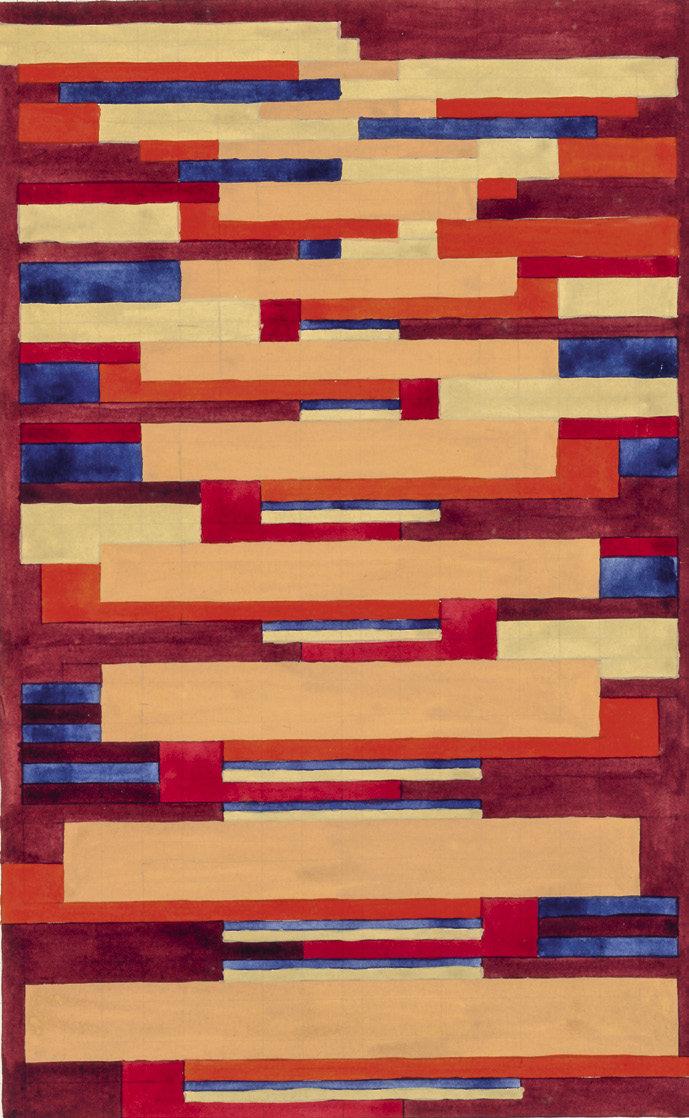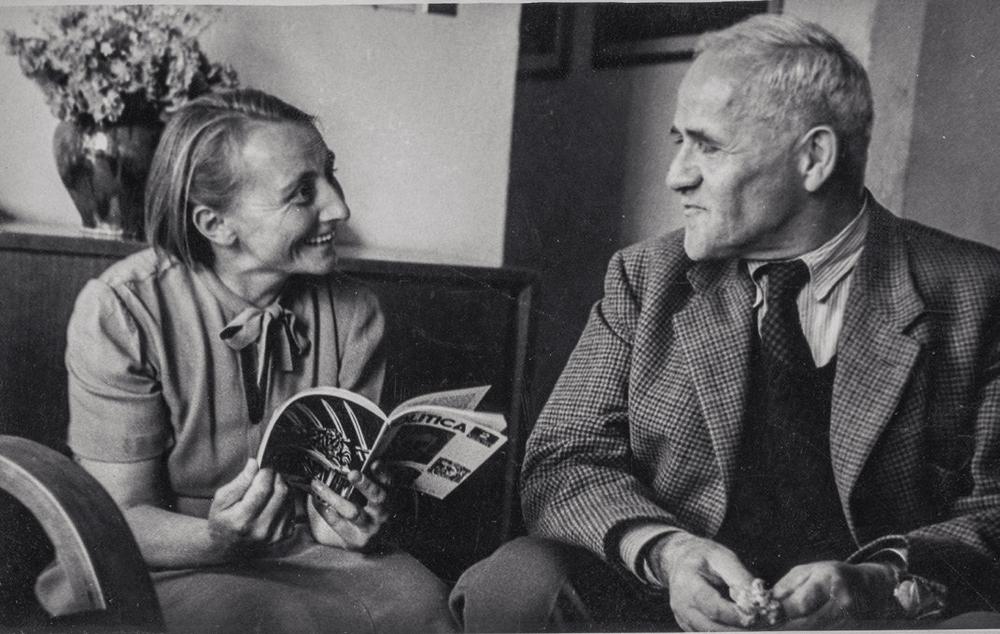Born: Lena Bergner, 1906, Coburg, Germany
Died: 1981, Bad Soden, Germany
Matriculated: 1926
Locations: Germany, Soviet Union, Switzerland, USA, Mexico
In 1931, Lena Bergner, a master weaver and Bauhaus graduate, quit an excellent job as head of the East Prussian Hand-Weaving Mill (Ostpreußischen Handweberei) in Königsberg and left for Moscow to join the Red Bauhaus Brigade. Former Bauhaus director Hannes Meyer, whom Lena Bergner married within the year, headed this pro-Soviet Bauhäusler group. They were idealistic and eager to put their skills as designers and architects into the service of the Soviet Union. At her husband’s side for the rest of his life, Lena Meyer-Bergner matched his enthusiasm, and the pair was part of an international cohort who believed that art had a central role to play in remaking the world as a better and more equitable place.
Like many at the Bauhaus, in her youth Lena Bergner was a member of the Wandervogel (Hiking Birds) movement, which instilled in its members a commitment to change and a love of the outdoors. Upon joining the Dessau Bauhaus, Bergner completed the preliminary course with Josef Albers and took typical Bauhaus courses with Wassily Kandinsky, László Moholy-Nagy, Oskar Schlemmer, and Joost Schmidt. Her work with Paul Klee reflects his theories of color as based on interactions, as in her exercise to explore the interpenetration of complementary colors. She specialized in weaving and became a brilliant colorist in her diverse and resolutely modern designs. Bergner diversified her studies within the Bauhaus by spending the winter 1927–1928 semester in the advertising workshop. She also sought the expected training outside of the Bauhaus with two practical semesters (Außensemester). The first, winter 1928–1929, was at the dye-works school in Sorau; the second, spring 1929, she and Grete Reichardt traveled to Königsberg to work with Bauhäusler Ruth Hollós-Consemüller, head of the weaving workshop of the Home Worker’s Union of East Prussia (Verein für volkstümliche Heimatarbeit in Ostpreußen). Bergner passed her journeyman’s examination in 1929 and became head of the Bauhaus’s dyeing department.
In October 1930, Bergner received her Bauhaus Diploma and left for the East Prussian Hand-Weaving Mill, a charitable organization that helped poor tenant farmers supplement incomes with small-scale hand weaving, very different from Bergner’s industry-oriented Bauhaus training, as scholar Kristen Baumann has pointed out. Bergner liked the work but jumped at the chance to go to Moscow, something she had already attempted earlier during her Bauhaus studies, according to Astrid Volpert, an expert on the Bauhaus-Soviet connection. After initial struggles with Russian, Meyer-Bergner became the lead—and only—designer for a furniture-fabric factory with six hundred employees. In her autobiographical notes, Meyer-Bergner recalled how, during this period of the first Soviet five-year plan, all media, even fabric design, was deployed to communicate the tasks at hand. Of her own propagandistic work, she recalled, “the last thematic drawing was a jubilee fabric to celebrate the 15th anniversary of the red army…. in the opinion of the red army soldiers, the tanks were a bit dated. but as a lay person, naturally i couldn’t know that.” Meyer-Bergner led the factory through 1936, before she and Meyer left an increasingly dangerous situation and the beginning of the Stalinist purges. After time in Switzerland and travels through the United States and Central America, Meyer-Bergner was appointed to a professorship of textiles in Mexico; during her ten years in that country, she was once again hired to develop hand weaving among the poor, this time in Mexico’s Ixmiquilpan region.
Back in Switzerland from 1949, the Meyers collaborated on Bauhaus-related publications until Meyer’s death in 1954. Seventeen years her husband’s junior, Lena Meyer-Bergner outlived him by a quarter century and devoted herself to the archiving and publication of her husband’s work.

Lena Meyer-Bergner, design for a rug, c. 1928, watercolor and pencil on watercolor cardboard
